Premium Only Content
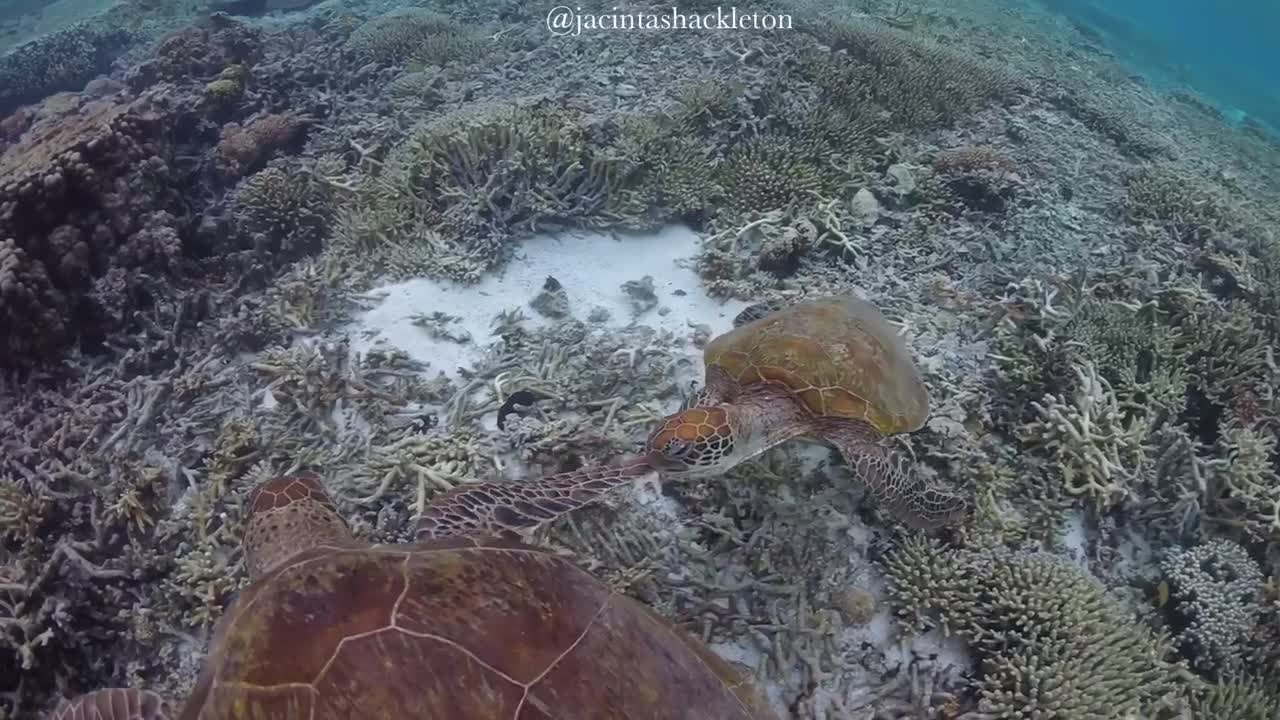
Endangered Sea Turtles Navigate Their Way Through The Open Waters
The turtles return to the exact same place where they were born to mate and lay their own eggs. Turtles swim from the southeastern U.S. coast into the North Atlantic subtropical gyre, the circular present system that flows around the Sargasso Sea. The migrations of young loggerhead turtles take them into the relative safety of the open ocean where predators are less plentiful than in coastal waters. Nearly all classes of sea turtle are classified as Endangered. Slaughtered for their eggs, meat, skin and shells, sea turtles suffer from stealing and over-exploitation. They also face habitat obliteration and accidental capture in fishing gear. Climate change has an influence on turtle nesting sites.
Leather-backs can dive to a depth of more than 1,000 meters (3,000 feet) in search of their prey, jellyfish. The hard-shelled species dive at shallower depths, typically up to 175 m (500 feet) though Olive has been recorded at 225 to 250 m (750 feet). Researchers have acknowledged that the turtles, like several animals, navigate at sea by identifying the invisible lines of the magnetic field, similar to how sailors use latitude and longitude. But they didn't know how the turtles were able to return to the place where they were born.
The turtles also rely on Earth's magnetic field to discover their way home. That's because each part of the coastline has its own magnetic sign, which the animals remember and later use as an inner compass. It's not an easy commute, though—the magnetic field changes slowly, and loggerheads have to shift their nesting sites in response, according to the study, published January 15 in Current Biology. All species of sea turtles are in danger or endangered and secure through Florida Statues, Chapter 370, and by the United States Endangered Species Act of 1973.
Turtles travel hundreds of miles out to sea, the carnivores seems to prefer coastal homes, and are the most abundant of all marine turtle species in U.S. waters. Every year, hundreds of volunteers walk along Florida's sandy beaches to count loggerhead nesting sites, which provides scientists with a rich population statistics set. At the same time, researchers have been tracking subtle shifts in Earth's magnetic field along Florida's coasts, using compasses to measure how the field's strength and other properties change over time. Sea turtles hatch throughout the year but frequently in summer. Hatching use a carbuncle to help break open the shell. After hatching, the young turtles may take 2.5 to 7 days to dig their way to the surface. Hatching generally wait until night to emerge from the nest.
-
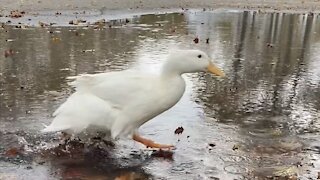 0:12
0:12
Wrinkle The Duck
2 years ago $43.20 earnedPet duck runs back and forth through puddle
4.27K19 -
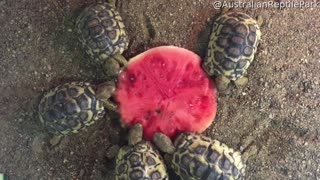 0:52
0:52
ViralHog
3 years ago $0.25 earnedTurtles Enjoy a Nice Christmas Dinner
9632 -
 0:36
0:36
plutobirdie
2 years ago $43.26 earnedHow to teach your bird to fly back to their perch
3.44K25 -
 11:56
11:56
Houseboats101
2 years agoOpen Waters!
27 -
 0:28
0:28
Davidolivx
3 years ago $40.78 earnedHundreds of chicks run to greet their caretaker
48.6K143 -
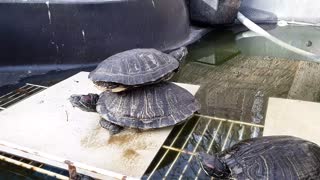 0:12
0:12
Reptile Rescue
3 years ago $12.51 earnedTurtles one-up each other at basking time
263K7 -
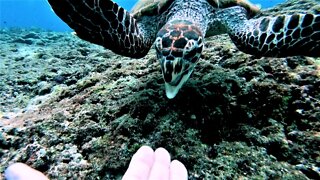 1:38
1:38
WildCreatures
2 years ago $4.32 earnedEndangered sea turtles are extremely curious about scuba divers
8.96K31 -
 2:03
2:03
Reuters
2 years agoQuiet beaches help Senegal's endangered turtles
120 -
 0:22
0:22
rumblestaff
3 years agoHungry parrots love snacking on their delicious food
1.26K1 -
 0:25
0:25
ViralHog
3 years ago $0.31 earnedFriendly Yak Wants Drive Through Snacks
1.2K3